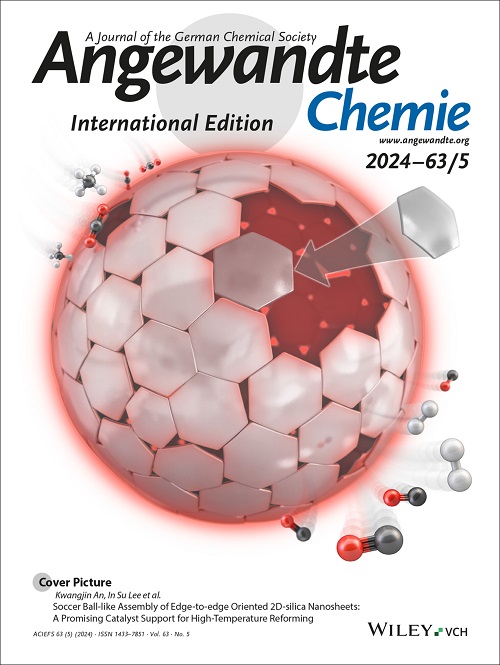纳米酶脂质体的多活性调控生物化学微环境的稳态
IF 16.1
1区 化学
Q1 CHEMISTRY, MULTIDISCIPLINARY
引用次数: 0
摘要
在生命系统中,涉及多种酶的级联反应对调节生化微环境的稳态至关重要,对移植重塑至关重要。然而,对于现成的用途,设计和构建治疗性脂质体,在初始移植阶段复制自然细胞功能,仍然是组织工程合成生物学的一个重大挑战。在此,我们开发了一种具有多酶纳米酶活性的仿生脂质体来调节外源性植入物诱导的促炎因子。通过在CeO2纳米颗粒(NPs)上自组装人工膜制备了loposomal。这些膜具有类似于内皮细胞(EC)膜的负电荷表面,有效地减弱了血液成分的粘附和聚集。CeO2纳米酶不仅能将三磷酸腺苷/二磷酸腺苷(ATP/ADP)水解为单磷酸腺苷(AMP),减少后续血小板聚集,还能调节生化微环境稳态,从而促进组织再生。这项工作促进了细胞样实体的发展,这些实体能够调节生物和非生物界面之间的信号通信。本文章由计算机程序翻译,如有差异,请以英文原文为准。
Multi-activity of Nanozyme Liposome Regulates the Homeostasis of Biochemical Microenvironment
In living systems, cascade reactions involving multiple enzymes, critical for regulating the biochemical microenvironment’s homeostasis, are essential to transplantation remodeling. However, for ready-to-use purposes, designing and constructing therapeutic liposomes that replicate natural cell functions during the initial transplantation phase remains a significant challenge in synthetic biology for tissue engineering. Herein, we developed a biomimetic liposome with multi-enzymatic nanozyme activity to regulate proinflammatory factors induced by exogenous implants. The loposomes were fabricated through the self-assembly of artificial membrane on CeO2 nanoparticles (NPs). These membranes, featuring a negatively charged surface analogous to endothelial cell (EC) membranes, effectively attenuate blood component adhesion and aggregation. The CeO2 nanozyme not only hydrolyzes adenosine triphosphate/adenosine diphosphate (ATP/ADP) to adenosine Monophosphate (AMP), reducing subsequent platelet aggregation, but also regulates biochemical microenvironment homeostasis, thereby promoting tissue regeneration. This work advances the development of cell-like entities capable of modulating signaling communication between living and abiotic interfaces.
求助全文
通过发布文献求助,成功后即可免费获取论文全文。
去求助
来源期刊
CiteScore
26.60
自引率
6.60%
发文量
3549
审稿时长
1.5 months
期刊介绍:
Angewandte Chemie, a journal of the German Chemical Society (GDCh), maintains a leading position among scholarly journals in general chemistry with an impressive Impact Factor of 16.6 (2022 Journal Citation Reports, Clarivate, 2023). Published weekly in a reader-friendly format, it features new articles almost every day. Established in 1887, Angewandte Chemie is a prominent chemistry journal, offering a dynamic blend of Review-type articles, Highlights, Communications, and Research Articles on a weekly basis, making it unique in the field.

 求助内容:
求助内容: 应助结果提醒方式:
应助结果提醒方式:


